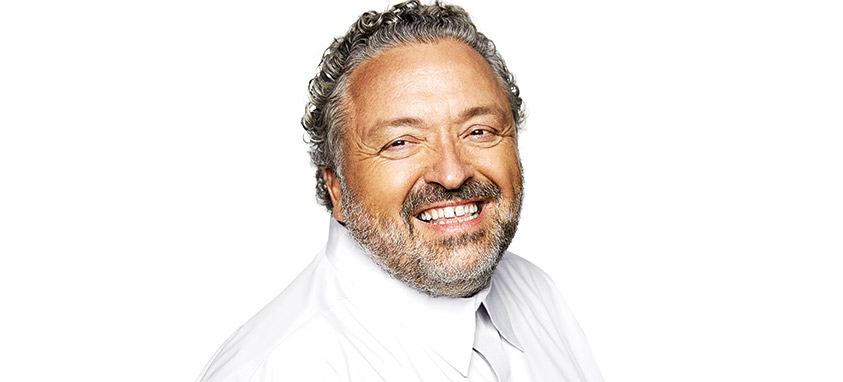Trade show booths need to stay ahead of trends
I’ll begin by saying that I don’t normally subscribe to the idea of trends. To me, a trend feels like a quick-fix solution that may elicit oohs and ahhs upfront, but ultimately does very little to evolve the brand experience category. By the time something is a trend, it’s too late to get on board. I try to focus on what’s next.
What the industry needs right now is a more holistic strategy, one that’s built around the concept of personalization. We need to take a step back from designing big, sweeping experiences for our clients, and start thinking about how to design intimate, emotional experiences for our clients’ guests. We need to give these experiences value and make them personal.
With that in mind, here are some basic philosophies that I think can help us to shape the future of the brand experience industry.
The Booth is Not Your Design Problem─User Experience is
The world’s best designers understand the people using the product. Take the Herman Miller company. Its design process is driven by the individual office worker who will spend hours, weeks and maybe even years using its products. From sketch to production, Herman Miller furniture is designed to revolve entirely around the needs of this user. This is why the brand owns the idea of office performance.
The moral of the story? Don’t design for your clients, but rather for your clients’ end user.
Nowhere is this more relevant than the brand experience industry. We should be designing user journeys that make it easy for guests to find everything they need. People should be able to wander in and be immediately handed the keys to the kingdom. After all, what’s the point of inviting guests to our shows if we’re going to make them do all the work?
It’s a challenging task, but the brands that figure this out will own the idea of brand experiences.
Design for Individuals, Not the Crowds
In the old way of thinking, shows are a linear experience. Guests go to this booth, pick up a pamphlet, maybe grab a free T-shirt and then head for the main stage.
Why should each guest have the same experience as the next? They are all different. As humans, we’re designed to be interested in differences and to look for the change around us.
We should give guests the freedom to wander, explore and react to our brand experiences as they see fit. If the brand’s story is properly implemented throughout the space, guests will make a connection, whether they’re paying attention to a huge spectacle or examining a tiny detail.
If you want to encourage that sense of discovery and exploration, you have to design it into the space. You have to figure out what each individual guest will want and need, and then design an experience that gives it to them in a way that is smart, beautiful and easy.
You have to make it personal.
Design for All Five Senses
I went to a drag race recently, and I had a moment of inspiration when I saw the tagline on a banner. It read, “Feel the thunder. Smell the burn.” And I did! You feel it in your body. The experience is fully sensory and immersive.
That tagline expresses exactly what we’re trying to do in our field. You can’t get the true experience of being live at the race when you’re watching it on TV. You have to be there in person.
We have to design full sensory experiences, the kind you can’t get online. We must transport our guests to another world, a place that is tactile and sensory, and surrounds them at all times.
We need to put them in the stands of the drag race.
The Whole Field is an Experiment
That’s the amazing opportunity we have today. There are more ways than ever to build worlds for our guests to inhabit, and to tell stories within those worlds that will captivate and inspire them.
Trends alone aren’t enough. We have to keep asking questions, develop new tools and keep experimenting, exploring and learning. Most importantly, we have to make it personal.
The future of our category depends on it.
Freeman Design Council
Freeman Design Leadership Council was launched in October, bringing together 10 global design visionaries and experts to accelerate the strategic transformation of branded experiences for the meetings and events industry. The council, which was created and selected by Bruce Mau, includes executives from Walt Disney and Coca-Cola, entrepreneurs, a scientist and a retired Marine.
“The council members represent diverse, essential aspects of design innovation, and we are excited to bring these big thinkers together to exchange ideas and motivate change in the growing medium of brand experience,” Mau says. “I am deeply honored to be able to lead this team and drive the transformative change that will shape our industry for years to come.”
Council members are: Alex McDowell, Bruce Vaughn, Charles Adler, David Butler, Gina Warren, Haluk Kulin, Itamar Kubovy, Peter McGrath, Robert Schmidle Jr. and Sergei Gepshtein.
Bruce Mau is chief design officer for Freeman, the world’s largest brand experience company. A visionary, innovator and author, Mau has worked with leading companies, including Coca-Cola, The Walt Disney Company, McDonald’s, MoMA, Herman Miller and Seattle Public, and alongside star architects Frank Gehry and Rem Koolhaas.




